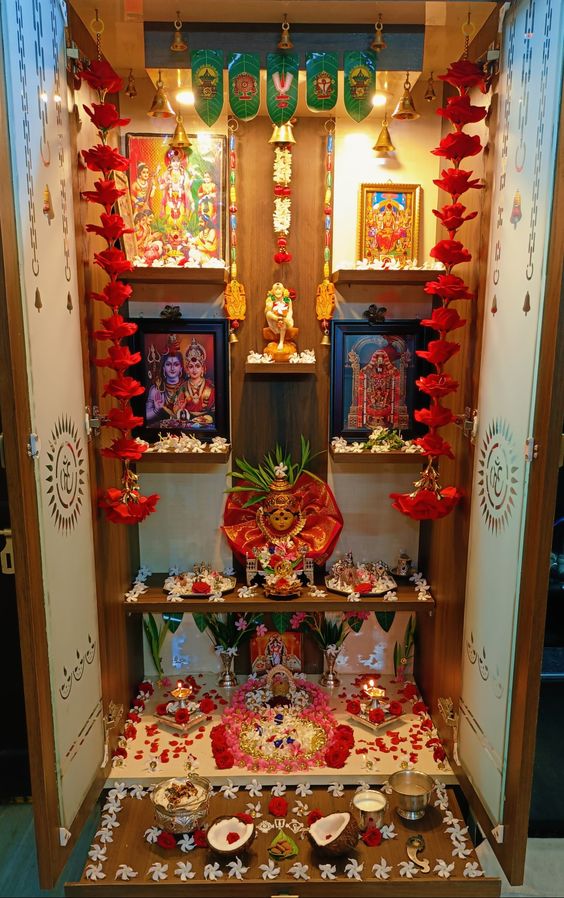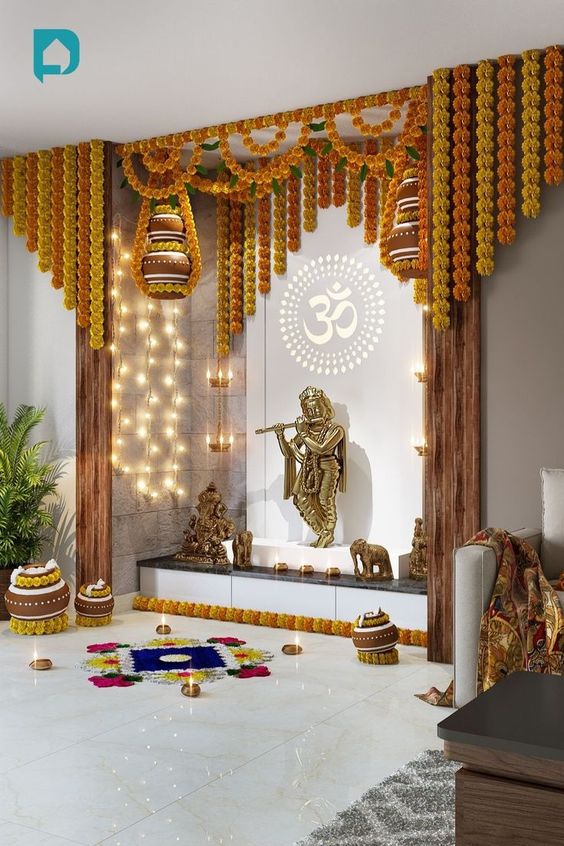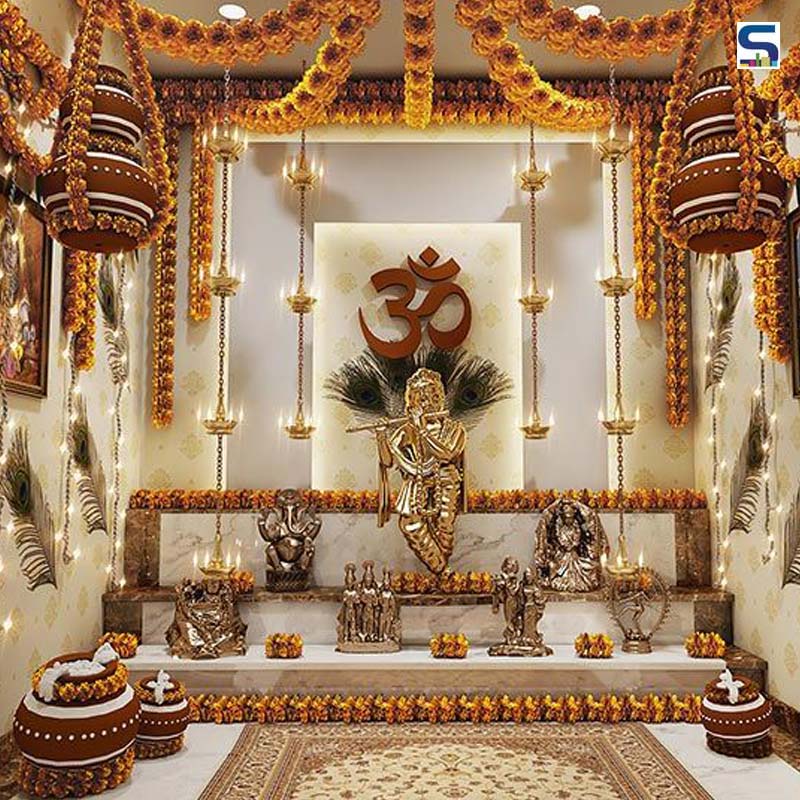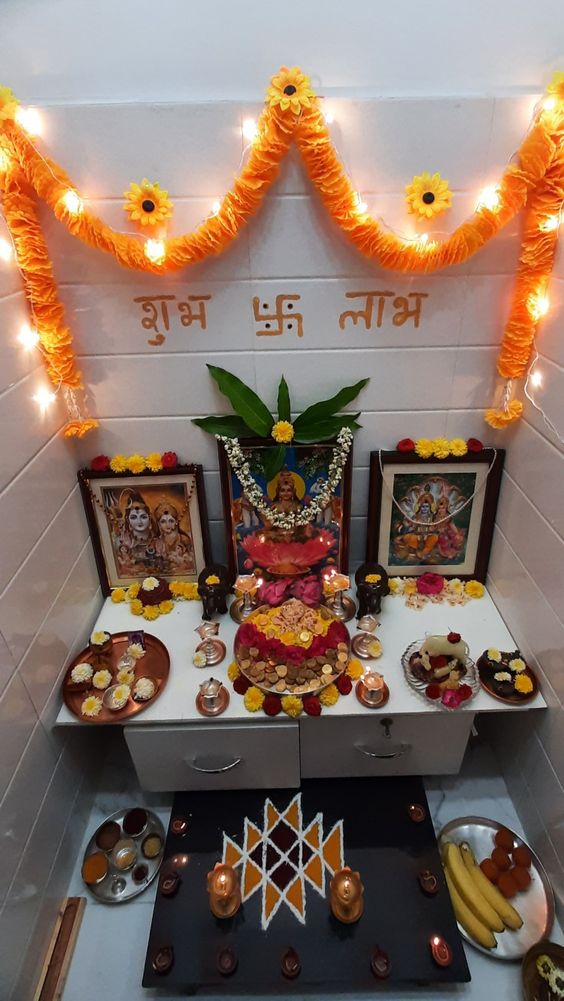When it comes to decorating your home, one of the most significant spaces to consider is the pooja room. A pooja room is not just a place for worship; it is a sanctuary for peace, reflection, and spirituality. As someone who has navigated the intricacies of designing a pooja room that resonates with personal beliefs and aesthetics, I understand the importance of creating a space that feels right for you and your family. In this comprehensive guide, I’ll share insights, tips, and personal experiences to help you design a beautiful pooja room that inspires and uplifts your spirit.
Understanding the Essence of a Pooja Room
A pooja room, or prayer room, serves as a focal point for spirituality within a home. Here, we connect with our beliefs, meditate, and seek solace. It must reflect the values and traditions of your family while also being functional and welcoming. Below are some essential aspects to consider when decorating your pooja room:
Importance of a Well-Designed Pooja Room
- Encourages spiritual growth and mindfulness.
- Provides a dedicated space for prayer and meditation.
- Enhances the overall ambiance of the home.
- Can serve as a beautiful focal point in your interior design.
Factors to Consider When Decorating Your Pooja Room

Before diving into the design elements, it’s crucial to consider some foundational factors that will influence the decor:
1. Location and Space
Choosing the right location is the first step. Ideally, the pooja room should be in the northeast corner of the house, as per Vastu Shastra principles. Ensure the space is quiet and away from distractions.

2. Size and Layout
The size of your pooja room can vary, but it should be large enough to accommodate your needs. Consider the layout carefully; you will need space for an altar, seating, and storage for religious items.
3. Safety Considerations
Ensure that the room is well-ventilated and free from any hazards. Avoid clutter, and keep flammable materials away from candles and incense holders.

4. Light and Airflow
Natural light is vital for creating a serene atmosphere. If possible, design your pooja room with windows to allow sunlight in. Incorporate airy elements to ensure good airflow.
Design Ideas for Your Pooja Room

Now that we’ve covered the basics, let’s delve into some creative ideas for pooja room decoration.
1. Choosing the Right Color Palette
The colors you choose can significantly impact the mood of your pooja room. Here are some color ideas:

| Color | Meaning | Best Used For |
|---|---|---|
| White | Purity and peace | Walls or major furnishings |
| Yellow | Happiness and prosperity | Accent details |
| Green | Harmony and life | Decorative plants |
| Gold | Luxury and richness | Accents and embellishments |
2. Selecting the Right Altar
Your altar is the heart of your pooja room. It should be chosen with care, often made of wood or marble. Consider a multi-tiered altar to accommodate multiple deities or a single pedestal for a central figure.

Popular Materials for Pooja Altars
- Wood: Traditional and warm.
- Marble: Luxurious and enduring.
- Metal: Unique and modern.
3. Incorporating Spiritual Elements
Use spiritual decor items such as:
- Idols and murti of deities.
- Paintings and wall hangings with religious themes.
- Rangoli designs at the entryway.
4. Lighting Options
Lighting is crucial. Use a mix of:
- Natural light from windows.
- Soft LED lights for ambiance.
- Traditional oil lamps or diyas for a spiritual touch.
Furnishing Your Pooja Room
Furniture selection plays a critical role in creating a functional and aesthetic pooja room. Here are some suggestions:
1. Seating Arrangements
Comfortable seating is essential for prolonged prayer and meditation sessions. Consider:
- Floor cushions or mats for a low seating arrangement.
- Simple wooden stools for a modern look.
2. Storage Solutions
Keep your pooja items organized with effective storage solutions:
- Small cabinets or shelves for religious texts and items.
- Decorative boxes for storing pooja supplies.
Adding Personal Touches
Your pooja room should reflect your family’s traditions and beliefs. Here are some personal touches you can consider:
1. Family Pictures
Include family photos with personal significance, which can evoke loving memories and emotions.
2. Personalized Art
Consider incorporating artwork created by family members or local artists that resonates with your spiritual journey.
3. Scent and Aroma
The scents of incense, essential oils, or fresh flowers can enhance your pooja room ambiance. Consider:
- Using incense sticks for daily rituals.
- Fresh flower garlands for decoration.
- Aromatherapy diffusers with calming essential oils.
Pros and Cons of Different Pooja Room Decor Styles
Traditional Style
- Pros: Reflects cultural heritage, rich in symbolism.
- Cons: May require more space and resources.
Modern Style
- Pros: Sleek, minimalist look, easy to maintain.
- Cons: Might lack the warmth of traditional elements.
Eclectic Style
- Pros: Unique, reflects personal style, combines various traditions.
- Cons: Can appear cluttered or mismatched if not planned well.
Maintenance Tips for Your Pooja Room
Once your pooja room is set up, regular maintenance is vital to keep the space sacred and inviting:
- Perform daily dusting to keep surfaces clean.
- Regularly replace flowers and incense to maintain freshness.
- Keep the area clutter-free to allow for peaceful meditation.
Frequently Asked Questions
What materials are best for a pooja room?
Materials like wood, marble, and metal are commonly used due to their durability and aesthetic appeal. Choose materials that resonate with your personal taste and spiritual significance.
How can I make a small pooja room look bigger?
Use light colors for walls, allow natural light, and opt for minimalist furniture. Mirrors can also create an illusion of more space.
Is it necessary to follow Vastu Shastra while designing a pooja room?
While not mandatory, following Vastu principles can enhance the positive energy and overall vibe of your pooja room. Consult a Vastu expert if in doubt.
How often should I clean my pooja room?
Daily maintenance is recommended, especially the cleaning of the altar and any surfaces where rituals are performed. A deep clean should be done weekly.
Can I combine pooja room decor with my living space?
Yes! An open concept can add charm. Use decorative partitions or plants to demarcate the pooja area while maintaining a cohesive look.
Conclusion
Designing a pooja room is an enriching experience that connects your spiritual life with your home. By considering the key elements discussed in this guide, you can create a sacred space that is not only aesthetically pleasing but also promotes peace and reflection. Remember, the most important aspect is that your pooja room reflects your personal beliefs and feels like a welcoming sanctuary for you and your family. Happy decorating!